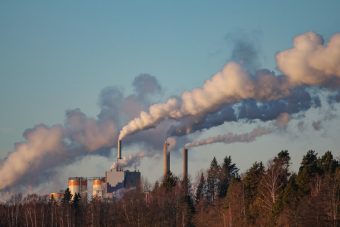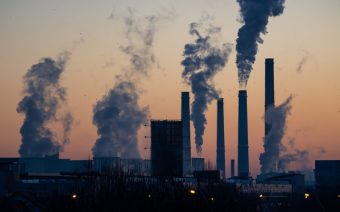
While emissions of key air pollutants have declined over recent decades, air pollution levels in Europe are still not safe. Children and adolescents are particularly vulnerable to air pollution because their bodies, organs and immune systems are still developing. Air pollution damages health during childhood and increases the risk of disease in later life, according to the EEA ‘Air pollution and children’s health’ briefing.
Air pollution is estimated to cause over 1,200 premature deaths every year among those under the age of 18 across the EEA’s 32 member countries. Although the number of premature deaths in this age group is low relative to the total for the European population estimated by EEA each year, deaths early in life represent a loss of future potential and come with a significant burden of chronic illness, both in childhood and later in life.
Children’s lung function and lung development are affected by air pollution, especially by ozone and nitrogen dioxide (NO2) in the short term, and by fine particles (PM2.5) in the long term. Maternal exposure to air pollution during pregnancy is linked to low birth weight and risk of pre-term birth. After birth, ambient air pollution increases the risk of several health problems, including asthma, reduced lung function, respiratory infections and allergies. It also can aggravate chronic conditions like asthma, which afflicts nine percent of children and adolescents in Europe, as well as increasing the risk of some chronic diseases later in adulthood.
Until air pollution is reduced to safe levels overall, improving air quality around settings like schools and kindergartens and during activities like school commutes and sports, can help reduce children’s exposure.
More:
- HOW IS AIR QUALITY MEASURED?
- FIVE CITIES TACKLING AIR POLLUTION
- AFTER LANDMARK UN DECLARATION, HOPE FOR CLEANER AIR
EEA monitoring update 2022: air pollution levels remain persistently high
In 2021, upwards of 90 percent of of the EU’s urban population was exposed to harmful levels of nitrogen dioxide, ozone and fine particulate matter (PM2.5).

PM2.5 is one of the most damaging pollutants to human health, with exposure to PM2.5 a leading cause of stroke, cancer and respiratory disease. In 2021, 97 percent of the urban population was exposed to concentrations of PM2.5 above the 2021 WHO annual guideline of 5 µg (microgram) /m3.
According to preliminary data from 2022, central-eastern Europe and Italy reported the highest concentrations of both PM2.5 due primarily to the burning of solid fuels like coal for domestic heating and their use in industry.
The EEA briefing ‘Europe’s Air Quality status 2023’ presents the status of concentrations of air pollutants in 2021 and 2022 for regulated pollutants, in relation to both EU air quality standards and the 2021 WHO guideline levels.
How clean is your city? Portuguese, Swedish cities score cleanest air
Faro, Portugal, and the Swedish cities of Umeå and Uppsala were ranked as the cleanest European cities and had the lowest average levels of fine particulate matter, or PM2.5, over the past two calendar years, according to the updated EEA city air quality viewer. Cities are ranked from the cleanest city to the most polluted, on the basis of long-term average levels of fine particulate matter.
Background
Under the European Green Deal’s Zero Pollution Action Plan, the European Commission set the 2030 goal of reducing the number of premature deaths caused by PM2.5 (a key air pollutant) by at least 55 percent compared with 2005 levels. To this end, the European Commission published in 2022 a proposal to review the ambient air quality directives, aiming, among other things, to align the air quality standards more closely with WHO recommendations.
The EEA’s air quality assessments highlight pollutants deemed to be most harmful to human health or that exceed the EU air quality standards and WHO guideline levels most frequently. The concentrations are obtained from measurements in over 4,500 monitoring stations across Europe that are officially reported to the EEA by its member and other collaborating countries.
Source: EEA



